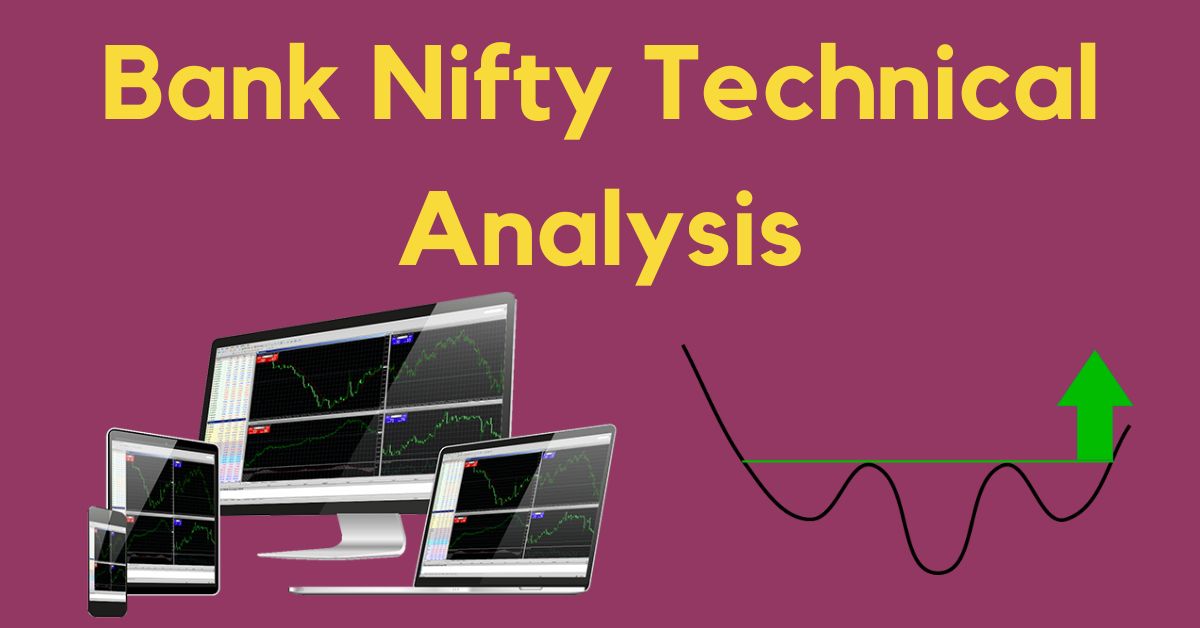Bank Nifty Technical Analysis In the ever-evolving landscape of the stock market, understanding technical analysis is crucial for making informed investment decisions. This article focuses on dissecting the technical aspects of Bank Nifty, providing insights that investors can leverage for strategic moves in the dynamic world of finance.
1. Introduction to Bank Nifty
Bank Nifty, a key index on the National Stock Exchange (NSE) of India, comprises banking stocks listed on the exchange. It is a benchmark that reflects the overall performance of the banking sector, making it a vital indicator for investors and traders alike.
2. Importance of Technical Analysis
Price Patterns and Trends
Technical analysis involves studying historical price patterns and trends to forecast future price movements. For Bank Nifty, understanding these patterns provides insights into potential shifts in market sentiment.
Support and Resistance Levels
Identifying support and resistance levels is fundamental. These levels act as psychological barriers, indicating where the price may reverse or continue its trend. Traders use this information to make entry and exit decisions.
Indicators and Oscillators
Technical analysis employs various indicators and oscillators to measure the strength and momentum of price movements. For Bank Nifty, popular indicators like Moving Averages and Relative Strength Index (RSI) can offer valuable signals.
3. Common Technical Analysis Tools for Bank Nifty
Moving Averages
Moving Averages smooth out price data to create a single flowing line, helping identify the direction of the trend. The intersection of short-term and long-term moving averages is a popular signal for potential trend reversals.
Bollinger Bands
Bollinger Bands depict volatility. When the price touches the upper or lower band, it may indicate overbought or oversold conditions. Bank Nifty traders use these bands to gauge potential trend reversals.
MACD (Moving Average Convergence Divergence)
MACD is a trend-following momentum indicator that shows the relationship between two moving averages of a security’s price. Divergence between the MACD line and the price can signal a potential reversal.
4. Candlestick Patterns and Bank Nifty
Bullish and Bearish Engulfing
Engulfing patterns signal potential trend reversals. A bullish engulfing pattern occurs after a downtrend, indicating a potential upward reversal. Conversely, a bearish engulfing pattern after an uptrend suggests a potential downward reversal.
Doji Patterns
Doji patterns indicate market indecision. Traders watch for Doji candles in Bank Nifty charts as they may precede trend reversals or signify a potential consolidation phase.
5. Bank Nifty Technical Analysis Strategies

Trend Following
Traders may opt for trend-following strategies, riding the momentum of established trends. Moving averages and trendlines are pivotal tools for identifying and confirming trends.
Counter-Trend Trading
Contrarian traders may look for opportunities to trade against the prevailing trend. This involves identifying overbought or oversold conditions using indicators like RSI and Stochastic Oscillator.
Breakout Strategies
Breakouts from support or resistance levels can signal the start of a new trend. Traders often use chart patterns like triangles and rectangles to identify potential breakout points.
6. Risk Management in Bank Nifty Trading
Setting Stop-Loss Levels
A crucial aspect of technical analysis is risk management. Traders set stop-loss levels based on support and resistance, ensuring that potential losses are limited in the event of an unexpected price movement.
Position Sizing
Determining the appropriate size for a trading position is essential. Technical analysts often use a percentage of their trading capital to determine the size of each position, aligning with their risk tolerance.
7. Current Trends and Forecasts for Bank Nifty
Recent Performance
Analyzing recent price movements and market trends is integral. Traders and investors should stay updated on news, economic indicators, and global events that may influence Bank Nifty.
Expert Opinions
Gaining insights from financial experts and market analysts can provide a broader perspective. Expert opinions, coupled with technical analysis, offer a comprehensive view for decision-making.
8. Conclusion
Bank Nifty technical analysis serves as a compass for navigating the complexities of the stock market. By understanding price patterns, trends, and utilizing technical tools, investors and traders can make well-informed decisions in pursuit of financial success.
9. FAQs for Quick Reference
- What is the significance of support and resistance levels in Bank Nifty technical analysis?
- How do moving averages help in identifying trends in Bank Nifty?
- What are common candlestick patterns to watch for in Bank Nifty charts?
- How can investors use Bollinger Bands for trading Bank Nifty?
- What risk management strategies are recommended for Bank Nifty traders?
Unlock the potential of Bank Nifty with a deep dive into technical analysis and make informed investment decisions.
